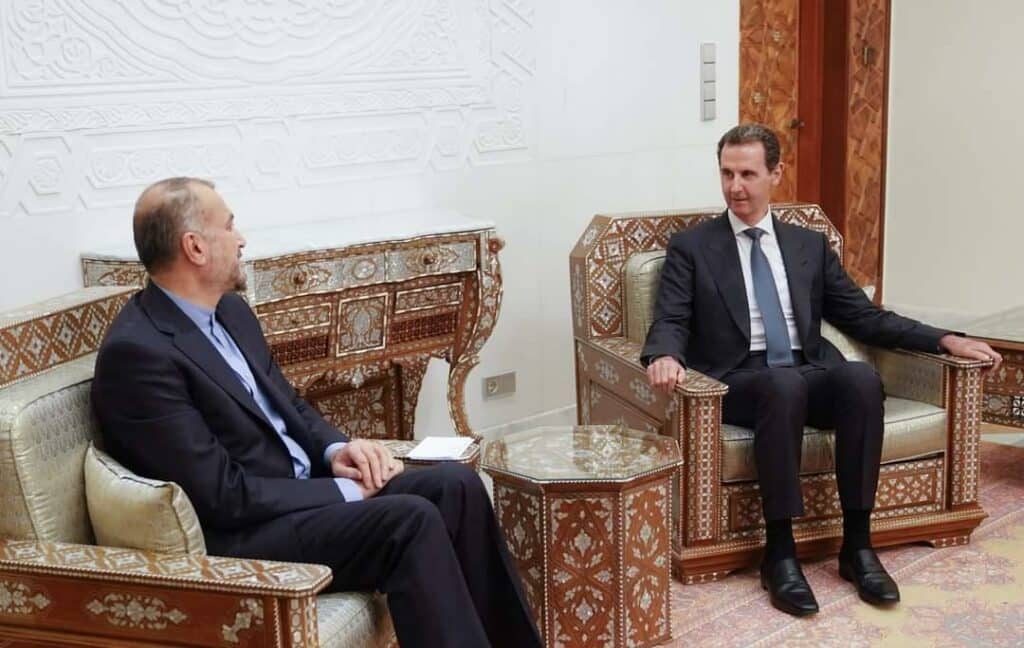As the war between Israel and Hamas progresses, the Iranian role in the conflict’s future course is becoming more prominent. The war began on October 7 after Hamas cross-border death squads raided southern Israel from Gaza, murdering 1400 Israelis and kidnapping at least 199 people in Gaza, including infants and the elderly.
The recent high-profile meeting between Hamas political bureau chief Ismail Haniyeh and Iranian Foreign Minister Amir Hossein-Abdollahian in Qatar, as well as between Hossein-Abdollahian and Hezbollah leaders in Lebanon, has raised critical questions concerning the shared objectives and strategic coordination between Iran and members of its radical axis, and the implications for the raging Hamas-Israel war.
It’s crucial to note the power dynamics involved in these relationships. Iran has significant influence over Hezbollah’s decision-making process. However, Iran’s relationship with Hamas is not as straightforward; while it supports, sponsors, and helps Hamas with its capabilities, and can be involved in some of its biggest decisions, Tehran is not always an automatic part of Hamas’s internal decision-making.
Hossein-Abdollahian’s tour, which included stops in Doha, Baghdad, Beirut, and Damascus, points to Iran’s endeavor to solidify its ‘axis of resistance’ network and to influence the manner in which the war progresses, including the vital question of whether Hezbollah in Lebanon will open a second front from the North.
It is worth noting that Amir-Abdollahian entered Syria by the Lebanese land border on Friday after two airstrikes, attributed by international media reports to Israel, closed Damascus and Aleppo airports last week. The strikes could suggest that Israel is signaling its ability to monitor Iran’s regional activities and to operate in multiple arenas to eliminate threats as they are detected, along with fighting the war against Hamas.
The centerpiece of Iran’s axis is Hezbollah in Lebanon, and other axis members include the Shi’ite militias in Iraq and Syria (as well as the Assad regime), Hamas and PIJ in Gaza, and the Houthis in Yemen.
The Iranian minister’s visit aimed not only to assert Iran’s continued support for Hamas but also to review the war and coordinate future steps, particularly with Hezbollah.
One of the alarming elements of this ‘diplomatic’ endeavor was Amir-Abdollahian’s statement about the possibility of the war with Israel opening on “other fronts.” This appears to be a warning that Hezbollah could be activated should Israel continue its offensive in Gaza, which it surely will.
This statement seems to indicate Iran’s willingness to escalate the situation, adding an extra layer of threat from new arenas. Already, Hezbollah has been escalating the Lebanese-Israeli border, firing anti-tank missiles at Israeli targets in recent days, as well as projectiles. These attacks have led to Israeli casualties, including a man killed on October 14 in an anti-tank missile strike, while a soldier was killed in an earlier anti-tank missile strike on October 11. Two IDF soldiers were killed in an attempted infiltration from Lebanon by a terror squad.
A number of questions remain open.
Is Hezbollah being urged by Iran to escalate and deteriorate the situation into war? Is it being told to continue to maintain attacks on Israel that Hezbollah calculates will be just at the Israeli threshold for war, to signal solidarity with Hamas while leaving open the option of avoiding a larger war?
Hezbollah’s conduct over the past 18 months suggests that it is not deterred by the risk of war and that it views itself as gaining strategically from either striking at Israel and enjoying the boost to its standing by an Israel that fails to strike back appropriately, or entering into a war that would enable it, in the long run, to take over the ruins of Lebanon afterwards.
It is also unclear whether Iran asked Qatar to secure
enhanced financial backing for Hamas at this time.
The most likely scenario appears to be an Iranian directive to Hezbollah and other proxies to continue their low-level harassment of Israel, accepting the risk of a broader conflict as a possible outcome.
While Iran has a vested interest in preserving Hezbollah as a deterrent against an Israeli strike on its nuclear program, it is also ultimately willing to sacrifice its Arab proxies to keep the focus away from Tehran and to keep Israel engaged in damaging combat around its borders, far from Iran, where the Iranian regime does not want to draw Israeli firepower as it becomes a nuclear threshold state.
The geo-strategic wartime landscape also includes recent visits by U.S. Secretary of State Antony Blinken to Israel, Egypt, and Saudi Arabia. The U.S. and its allies are engaged in an attempt to contain the war and stop it from spreading.
At the same time, recent statements by President Joe Biden about supporting Israel in its hour of need, the presence of two US carrier strike groups in the Mediterranean Sea, including aircraft carriers, as well as the delivery of armaments to Nevatim Air Force Base by an American cargo plane, all signal that the U.S. is prepared to take steps to deter other members of the Iranian axis, including Iran itself, from getting involved in the war.
These developments offer some clues about scenarios of the war spreading to a multi-front conflict, but no definitive answers.






